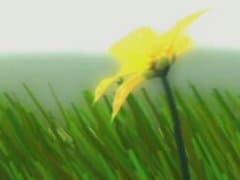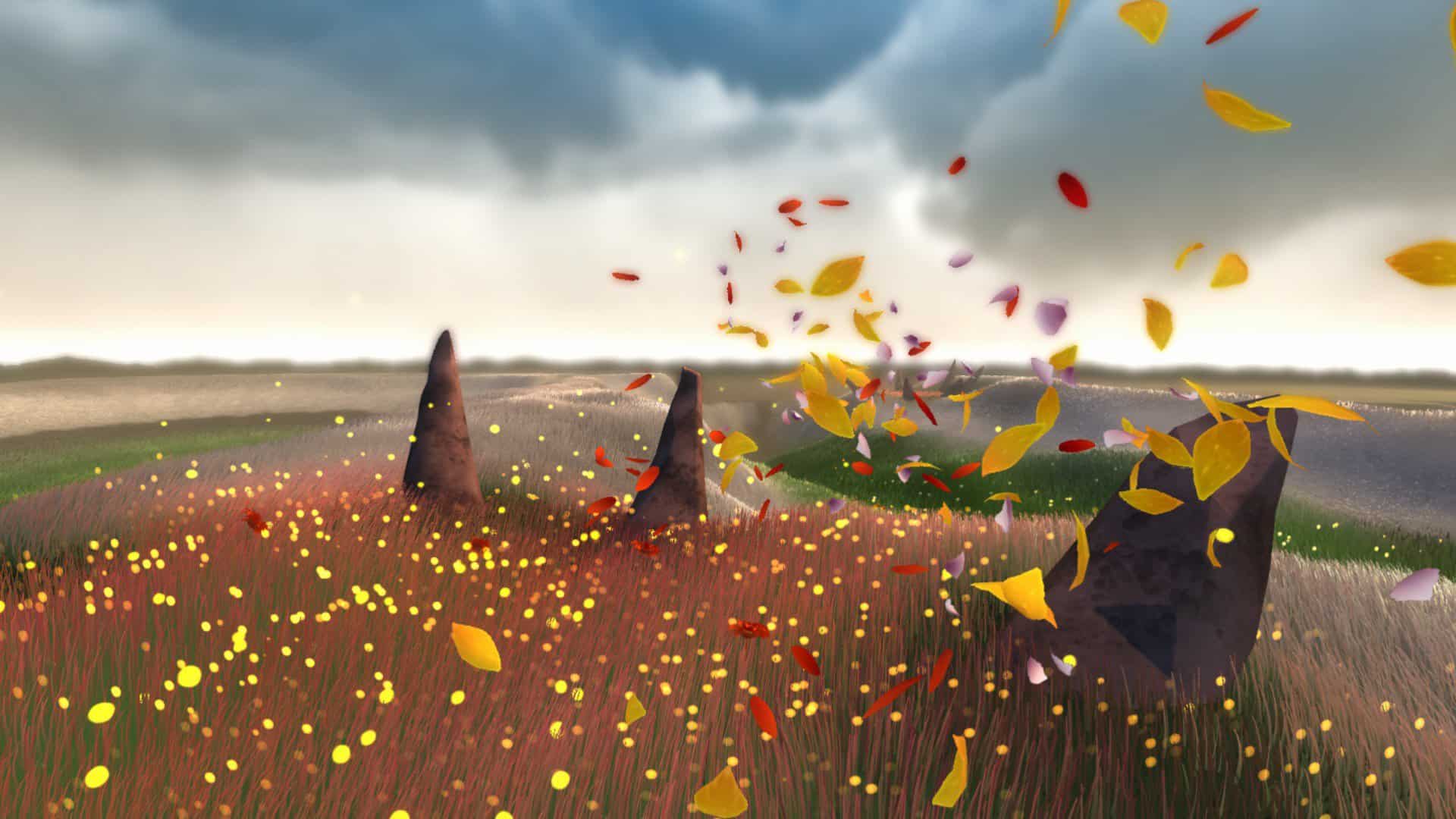You can trust VideoGamer. Our team of gaming experts spend hours testing and reviewing the latest games, to ensure you're reading the most comprehensive guide possible. Rest assured, all imagery and advice is unique and original. Check out how we test and review games here
Flower is a game about plants that have dreams. That may sound like a pretty weird concept, but for some reason it’s one that totally managed to get under my skin. Perhaps it’s just the time of year, or the fact that the office boiler has broken down (we’re all coming to work in eight layers of clothing), but there’s something about playing this that really tugs on my heart strings.
Let’s back up a bit. Flower is an indie title from thatgamecompany, the developer behind the strange-yet-wonderful flOw. It’s barely a videogame at all, feeling instead like a halfway house between a toy and an interactive art exhibit. The gameplay, such as it is, involves tilting the Sixaxis controller to steer a single petal as it floats on the wind. The world around you is dotted with closed flowers; as you blow past them, they’ll open up and release more petals which are then added to your swirling mass. Passing over flowers also trigger notes that add to the ambient soundtrack. If you activate all the flowers in a given area then colour will flow out into the surrounding scenery, bringing life to the dull landscape and granting you access to new parts of the level. And that’s all there is to it.
It sounds like nothing, and yet in practice it all proves to be immensely soothing. Well, that was my reaction at any rate: Flower seems destined to be one of those titles that wins rapturous praise from some corners of the gaming community, and baffled stares from others. The reaction here at VG towers was similarly split down the middle: Seb and I thought it was great, Wez was quite sceptical, and Tom and James thought it was “alright.” However, there was certainly no argument over Flower’s gorgeous art style – and as everyone gathered round to take a gander, the game prompted a fairly passionate (and unusually non-violent) discussion.
Your own reaction to Flower will probably depend on your attitude towards the good old “games as art debate”. Flower certainly has goals, a beginning and an end to its levels, but there’s nothing competitive about them – no lives to be lost, high scores to be won or even any real skills to be mastered. Interaction with the game is really limited to steering and determining the speed at which you blow along (you can speed up by holding any button on the controller). If that sounds a bit dull to you, or if you have an incurable addiction to headshots and hadoukens, then you’re unlikely to fall in love with Flower. On the other hand, if you have an open mind and like the idea of something that’s more of an experience than a game, then you’re likely to have a far more positive reaction.
The first 60 seconds of Flower is enough time to give an indication of thatgamecompany’s intentions. As with last year’s indie darlings, Braid and Pixeljunk Eden, the game foregoes a traditional title screen and instead presents you with a sort of interactive hub stage. After booting up for the first time you’ll find yourself inside a rather depressing flat, a run-down dwelling with broken windows overlooking a grey city. On a table beside the window is a plant pot with a single, dejected-looking shoot. You’re free to look around the room a bit, but holding any button will cause the camera to zoom in on the tragic flower, eventually fading to black. A short cut scene follows – a brief but beautiful scene that depicts traffic rushing through the city at night – and then the first level begins. You are presented with a lone flower, and with a tap of the joypad your first petal bursts up into the air.
It’s at this point that you really begin to get a feel for the spirit of the game. As mentioned before, the rural landscapes of each level are initially drab and monochrome – but as you guide your petals around the world, you spread colour and life to the places you visit. This is what the flower is “dreaming” about. It wants a change from the bleakness of the city; it wishes for a better, livelier world – much in the same way that we might slump at our desk and wish for some form of escape. And according to Flower, this kind of positive spirit is a good thing: every time you complete a level and return to the flat, you’ll find that the place has brightened up a bit. The old plant will have grown and flowered, and a new pot will have appeared on the table. Isn’t that delightful? Isn’t that just a sugary spoonful of snugly-wuggly snookums?
Okay, okay – so I’ll admit it: Playing Flower has turned me into a complete ponce. I’ve all but failed to maintain an objective Previews Editor tone, and now I fear that I’m turning into a CareBear. Trust me when I say that the game itself is nowhere near as twee as it sounds on paper. I know that some of you will already be thinking, “what a load of bollocks!” To an extent, that’s fair enough, but I also have no doubt that a lot of people will really love this game too, and that it’ll probably end up as one the more discussed indie titles of 2009.
What remains to be seen is how much it will cost. The preview code we’ve been sent offers the first three of the game’s six levels. Each stage is certainly longer and more drawn out than the last, but it’s still fair to say that the full release will be quite short. Given the nature of what Flower is, that shouldn’t be too big a problem. The main challenge thatgamecompany faces is convincing PS3 owners that this is something more than a tech demo. Given its relative brevity, I can’t imagine there will be a demo on PSN – which is a shame, since trying the game out is probably the best way to get a feel for it. Still, these are good times for indie developers, so with any luck Flower will end up with the loving audience it deserves. Fingers crossed.
Flower will be released on PSN at some point this year.
Flower
- Platform(s): iOS, PC, PlayStation 3, PlayStation 4, PS Vita
- Genre(s): Adventure, Arcade, Casual, Family, Simulation

/https://oimg.videogamer.com/images/d87b/flower_1.jpg)
